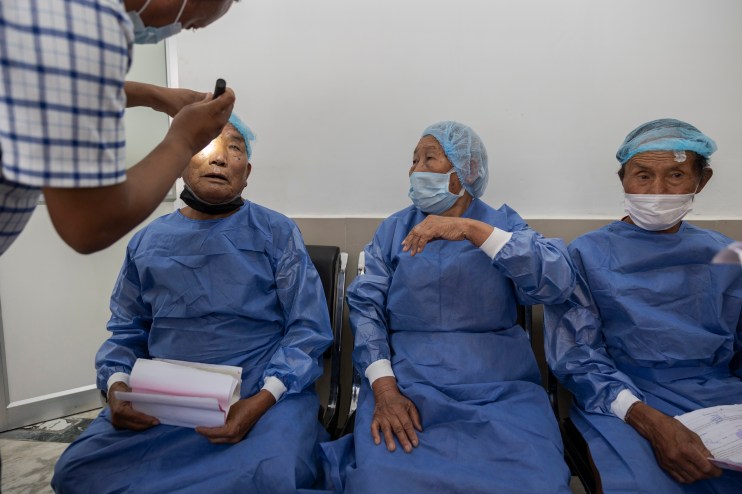
Finding new ways to treat cataracts

Professor Barbara Pierscionek, Deputy Dean for Research and Innovation in the Faculty of Health, Education, Medicine and Social Care at Anglia Ruskin University.
One of the worst fears is that of blindness. The great tragedy of the modern world is that so many people have sight impairment and that so much of this is preventable. In spite of the scientific discoveries, technological advances and the growth in surgical techniques, people in low and middle-income countries have little or no access to these developments and effective treatment. A cataract is a particularly sobering example of continued and growing inequalities in healthcare and medical access despite the fact that cataract is a treatable condition. Yet this disease for the most part has a very slow progression, causes so much misery, leads to reduced life quality and exacerbates poverty. It is estimated that 95 million people globally have cataracts.
In simple terms, a cataract can be likened to an unclean window through which it is difficult to see the world outside. As the transparent lens becomes more and more opaque, sight is gradually diminished until daily tasks become too difficult. The explanation of what is meant by a cataract is widely accepted as changes in the proteins of the lens that lead to disturbance to their organisation. This creates dense protein clumps that prevent light from getting through the lens to the retina at the back of the eye. The causes of such aggregation are manifold and, given that the most common form of cataract is the one that occurs with age, causes can include a number of lifestyle factors and behaviours, as well as genetic predisposition. Smoking and poor nutrition have been linked to cataracts as have systemic diseases such as diabetes.
The prevention of cataracts is given far less emphasis than it should. Whilst vast sums of money and innumerable resources have been spent on campaigns to prevent obesity, control diabetes, and reduce smoking, there is a paucity of similar activities and programmes spent on cataracts and its prevention, or at the very least, to reduce its progression. Cataracts progress very slowly and given that some of the factors that lead to opacification are known and indeed are associated with chronic conditions such as diabetes, bad or poor nutrition and smoking, widening existing campaigns should be widened to include the fact that cataract is a possible consequence of lifestyle choices that can be modified. Indeed, the fear of sight loss may be a greater motivator to alter bad habits than current campaigns and has the potential to bring about a reduction of associated conditions such as diabetes, obesity and cancer caused by smoking.
In terms of help to those in the developing world lifestyle choices are far more limited. The only current treatment for cataracts is surgery to remove the cataractous lens and replace it with an implant lens. Whilst the surgery is simple and relatively safe, it is not without risk and it is not readily available to all. The developing world suffers from an acute lack of access to surgery resulting in progression of cataract and deterioration of sight that has a profound effect on life quality, employment and family life.
Cataracts in some parts of the developing world can progress to such levels of severe opacification, that surgery becomes more complicated and potentially more fraught with risk. For this reason and because even in the developed world, many people would prefer a non-surgical option, far more account of alternative treatments is needed.
There is promise, from recent research for such treatments but unfortunately, funding to take this to the next level and ultimately to the clinical is difficult to obtain. The reasons for this are, not surprising, if consideration is from the purely monetary basis. Cataracts are treatable, the drug modalities that are showing promising results may not yield significant profits and there may be perceived competition to optical industries that develop implants and to those with vested interests in surgery. A more altruistic stance is urgently need if we are take into account saving of sight from a global perspective.
The Tej Kohli & Ruit Foundation is a restricted fund operating under the auspices of Prism The Gift Fund, registered UK charity number 1099682.